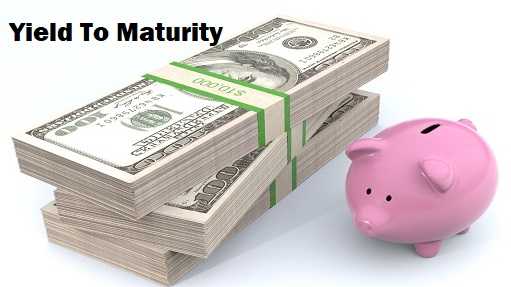In today’s finances and marketing, the term yield to maturity is of a frequent occurrence. An investor who looks forward to buying bonds at the present market price must know of this term before he makes a move. It holds significance and plays a vital role in the marketplace and shares. But before moving directly towards yield to maturity (YTM) one must know about the basics of bonds and how everything operates.
A bond is a financial unit that is representative of the loan amount that is made by the investor to a borrower. It essentially signifies a unit of debt that is issued by corporates or the government. Another takeaway is that this unit can be traded as an asset as well.
They come with dates called maturity dates before which the full loan amount needs to be paid by the borrower with proper interest fixed at the time of debt. If the borrower fails to he is exposed to default risk associated with his agreement with the investor.
Bonds are issued primarily by the government or by the corporate. Government acquires bonds for funding of many operations and government projects like construction of roads, highways, schools, hospitals, etc. On the other hand corporate issues bonds to escalate their business and make more money off it.
In both situations, yield to maturity plays an important role as far as interest rates are associated with bonds.
What Is Yield To Maturity?
Yield to maturity is the capacity of a bond to return an interest over it. It is defined as the internal rate of return that the investor obtains when he buys a bond at the present market price and value. It comes with a major assumption that all the principal amounts are paid on time and schedule throughout the full duration and that the bond is held till maturity.
In financial terms, maturity is the date up to which the final transaction of a loan or bond is due. Yield to maturity essentially represents the theoretical or expected return amount of a bond if the investor holds the bond until the maturity date. A common practice is to annualize it rather than calculate it quarterly or half quarterly.

With the fluctuating market rates, an important question may arise as to how these returns work. The answer to the question lies in a basic term associated with bonds called coupon rates. The coupon rates of a bond remain fixed for the full duration of the bond. Only the interest rates and the return yield changes with the market making a bond look valuable at one time while not so good at another point of time.
YTM is therefore also related to the rate at which the amount of flow of cash in a business is assumed to be invested. The importance of YTM lays in the fact that it helps identify whether buying bonds will make for a good investment or not.
It helps investors make comparisons on the returns from different bonds, aiding them in deciding which one to go for. By understanding YTM, one can also gain insight on the changing market prices and conditions.
Read more about bonds here
Variations Of Yield To Maturity
Bonds are often associated with more features and characteristics. This gives rise to a certain variation of YTM such as Yield to Call, Yield to Put, and Yield to Worst.
Yield To Call
It is associated with bonds that are callable. Yield to call (YTC) refers to the return on the bond if the bond is held until the call date. The call date usually occurs before the maturity date thus it is also related to reduced cash flow in a business.
Yield To Put
This version is similar to yield to call with the difference that the bond or security can be sold back to the issuer (put). It is done at a fixed permissible date after purchase. Such bonds are associated with a selling price below the put price.
Yield To Worst
It measures the lowest possible yield on a bond. It is associated with bonds that can be called, put and have even more additional features like exchangeability.

Assumptions Made While Calculating Yield To Maturity
There are some heavy assumptions made when we calculate yield to maturity which are listed below.
- The foremost assumption is that the bond or security is held for the full duration till maturity or maturity date.
- The principal associated with the bonds or any other coupons are paid on time.
- The risk that the YTM return amount is not obtained due to not reinvesting the coupons at the YTM rate is called reinvestment risk. An important assumption that is made for YTM is that the coupons received are invested again at the exact same rate thereby ignoring reinvestment and its risk.
How To Calculate Yield To Maturity And Its Variations?
The different formulas and methods to calculate them are listed below.
YTM
Yield to maturity can be calculated using the following formula. Divide the face value with its present value. The time period root of this followed by deducting 1 gives the YTM for zero-coupon bonds. It can also be calculated on a trial and base error method as well as for bonds associated with coupons.
YTC
The formula for yield to call is (C/2) * {(1- ( 1 + YTC/2)-2t) / (YTC/2)} + (CP/1 + YTC/2)2t). Here C is the coupon amount. CP is the call price of bonds, YTC is years to call and t is the number of years pending before the call date. The formula has other variations as well which rely on market value as well.
YTP
The formula to calculate YTP is: (AI+((PTP-CP)/YTP))/((PTP+CP)/2). Here AI is annual interest, CP is call price, PTP is a price to put and YTP is years to put.
YTW
There is no fixed equation to calculate YTW. It can be found out by estimating the lowest yield one obtains on a bond. YTM is always more than YTW, so it can be used as a rough estimate to set an upper boundary on YTW.
Yield To Maturity Calculator Examples
Example 1
We consider a zero-coupon bond as a starter. Let face value is $100. The bond lifetime is 20 years and it is priced at 5% YTM. Then the present value of bond is 100/(1.05)20 = $37.73. So what happens is the price of the bond grows over the 20 years to $100 and the return is 5%, which we obtain annually.
Now let us consider interest rates start falling and are at 3% YTM at an instance. The time remaining to maturity is 12 years. Then at that time, the value of bond is 100/1.0312 = $70.42. So even though rates declined, the return earned in the first eight years is (70.42/37.73)1/8-1=8.11%.
So, over the entire remaining period, 5% was earned. And this is regardless of the changes in rates in between before the maturity date.
Example 2
Some data regarding a bond are given as follows. Let, years left to mature is 5, coupon is at 6 % and face value is Rs5000. The current market price is Rs4700. Then using the formula to calculate YTM rate, YTM = (300+(5000-4700)/5)/(5000+4700)/2=7.42%.
Example 3
Let number of years to maturity is 10. Bond’s current market price is Rs.2000 and face value is Rs.3000. Then by using YTM= (FV/CP)1/T-1, we can calculate YTM. Substituting these values, YTM = (3000/2000)1/10-1 = (1.5)0.1-1 = 1.04137-1 = 41.37%
Example 4
YTM can also be calculated through trial and error and by intuition as well. Let a bond is issued with a face value of Rs.1000 at coupon interest rate 8% and the bond matures in 7 years. Let us assume after 2 years, current price of bond has been reduced to Rs.800 from that of 1000.
From the basic concepts, coupon rate remains fixed and the person has been entitled to pay Rs80/year. Then the actual yield becomes 80/800 x 100= 10%. This is also called current yield.
But this does not take into account the difference of Rs.200 which must be included in calculations. Using the formula as in example 2, YTM comes out to be 13%
Yield To Maturity Vs. Coupon Rate
Coupon rate is a fixed amount rate paid on a bond as part of fixed income security. Similar to YTM it is often annualized and expressed as a percentage. It is the rate at which interest is paid with respect to the bond’s actual value or face value and can be calculated by taking the ratio of annual payments by the bond face value or par value.
On the other hand, YTM serves as the rate of return that is fluctuating through the entire tenure or duration. Coupon rates remain fixed for the full duration and are not affected by factors like current market price or years to maturity and other market factors.
This can also be understood from the above examples. There the coupon rate remains fixed while YTM rates fluctuate based on current price of bond as in example 1.
Moreover, when an investor has already decided on a bond for its full duration, then coupon rates are what they should consider instead of YTM. At the same time, YTM considers any potential losses or profits due to changing market conditions.

Difference Between Current Yield And Yield To Maturity
The previous examples give slight hints of the difference between current yield and yield to maturity apart from how both can be calculated.
Current yield of a bond signifies the return for the present time, computed annually. YTM on the other hand is the total theoretical or expected return if all assumptions hold true and not just for the present year. The methods using which both of these are calculated also differ. While current yield can be computed by dividing annual payment by bond price, the calculations for YTM can be quite complex.
YTM can also be thought of as return when bond becomes mature assuming it is held for its entirety. On the other hand, current yield is simply the yield at any year before its maturity.
Aftermath And Significance Of Yield To Maturity
Once the bonds are held till maturity, YTM signifies the total return that the investor can expect to obtain from the bond. YTM also serves as a way to make comparisons between different financial units like bonds. When YTM for one is more than the other, an investor might consider buying the first bond.
This also holds true for any time before maturity once proper care for deduction of extra costs are taken care of. YTM gives a roadmap as to how the returns changed during the lifetime of a bond to better help understand investment in the market. This, in turn, serves as a great experience as well as a learning tool for anyone trying to get into finance and the market.

Conclusion
Bonds are an essential part of the financial market. Large numbers of people deal with investment in bonds on a very frequent basis. Thus evaluating when to go for one and when to pass is key. And Yield to maturity helps one do so as a metric and as a tool.
There are different methods to calculate YTM and a lot of its variations using mathematical formulas as well as intuition, trial, and error. The importance of YTM as a metric in investments is immense and thus makes it a must to know.
FAQs
Some commonly asked questions related to YTM are:
Also Read: Top 5 Profitable Businesses without Investment in India
